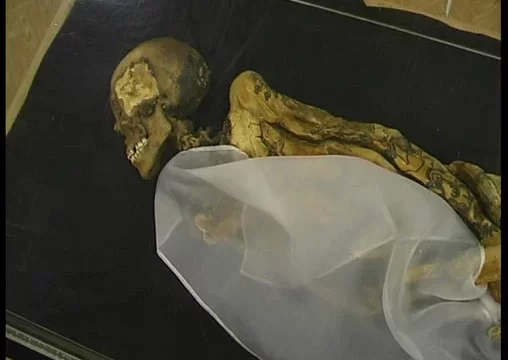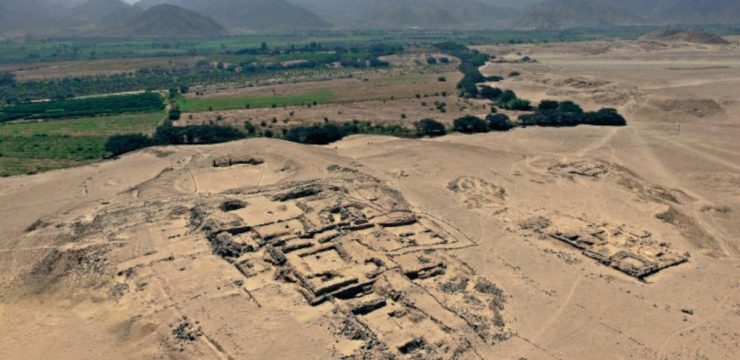During an exploration near the city of Dhar in Madhya Pradesh, India, paleontologists uncovered an extraordinary discovery—an expansive collection of fossilized dinosaur eggs. These relics belonged to a genus of massive, plant-eating dinosaurs known as titanosaurs. Experts believe the eggs were laid shortly before the catastrophic extinction event that occurred 66 million years ago, wiping out nearly all dinosaur species from the planet.

Dr. Harsha Dhiman, a geologist from the University of Delhi and one of the study’s lead authors, shared the significance of this find in a statement to the Daily Mail Online. “Our research has revealed the presence of an extensive hatchery of titanosaur sauropod dinosaurs in the study area and offers new insights into the conditions of nest preservation and reproductive strategies of titanosaur sauropod dinosaurs just before they went extinct,” he said.
What makes this discovery particularly exceptional is the preservation quality of the eggs. Some were so well-preserved in the surrounding rock and soil that degraded protein fragments were still detectable inside. For paleontologists trying to reconstruct the biological and behavioral patterns of one of Earth’s largest creatures, such a find is invaluable. It’s a rare opportunity to peek into the prehistoric past with clarity seldom afforded in fossil studies.
In total, scientists found 256 eggs spread across 92 nests, each containing varying numbers of eggs—some with as few as one and others with up to twenty. The eggs, roughly the size of coconuts, were laid by six different species of titanosaur. These nesting sites, along with others in India’s upper Narmada Valley and near Balasinor, form what scientists now refer to as the Lameta Formation—a massive, 600-mile-long corridor that has become one of the most significant dinosaur hatcheries ever discovered.
Though dinosaur eggs were first found in the Lameta region in the 1990s, this new wave of findings resulted from excavations conducted in 2017, 2018, and 2020. The results of this more recent research were published in the academic journal PLOS One, and they provide fresh insights into how and where these massive animals reproduced.
A block diagram published with the study illustrates the ancient landscape of the Lameta Formation. Some nests were found near bodies of water, such as ponds or lakes, while others were further away. The ones closer to water were often submerged, leading to unhatched eggs being buried under sediment, while nests located on drier ground showed more signs of successful hatching. This contrast has helped scientists understand the environmental factors that influenced titanosaur reproduction and survival.
The nesting behavior of these colossal reptiles is just as intriguing. Titanosaurs were long-necked sauropods that lived in India during the Late Cretaceous period. The fossils found in the Lameta Formation were the first dinosaur remains ever discovered in India, with initial finds dating back to the 19th century. These dinosaurs roamed the Indian subcontinent from about 145 million years ago until their extinction event. Fossil evidence has since confirmed that titanosaurs lived on every continent except Antarctica, indicating their widespread success.
According to Dr. Guntupalli Prasad, co-lead author and a geologist at the University of Delhi, the layout of the nests suggests that titanosaurs did not provide parental care. “Since titanosaurs were huge in size, closely spaced nests would not have allowed them to visit the nests to maneuver and incubate the eggs or feed the hatchlings,” he explained. “The parents would step on the eggs and trample them.” This implies that once the eggs were laid, the adult dinosaurs likely left them to hatch and fend for themselves, a behavior similar to modern reptiles like turtles.
Interestingly, the researchers found signs of sequential egg-laying, a reproductive trait shared with modern birds. One fossilized egg, known as an ovum-in-ovo or “egg-in-egg,” suggests that titanosaurs may have laid eggs one at a time, with brief intervals in between, rather than laying all at once as reptiles like crocodiles typically do. Dr. Prasad elaborated, “Sequential laying is the release of eggs one by one with some time gap in between two laying events. This is seen in birds. Modern reptiles, for example turtles and crocodiles, on the other hand, lay all eggs together as a clutch.”
Dr. Darla Zelenitsky, a dinosaur paleobiologist from the University of Calgary who was not involved in the study, commented on the nesting behavior, noting that the colony-style nesting patterns seen in titanosaurs are reminiscent of modern birds and crocodiles. “Such nesting colonies would have been a sight to see back in the Cretaceous where the landscape would have been dotted by a huge number of large dinosaur nests,” she said in an interview with CNN.
In terms of habitat, the Lameta region during the Late Cretaceous was likely a flat, marshy area, ideal for nesting. Titanosaurs would dig shallow pits in semi-dry terrain near water bodies to lay their eggs—similar to how crocodiles nest today. Proximity to water would help keep the eggs from drying out. But unlike crocodiles or birds, titanosaurs didn’t guard their nests. No fossil remains of hatchlings or juveniles have been found at the nesting sites, leading scientists to believe the young left the area quickly after hatching, possibly to avoid predation or environmental threats.
This discovery not only shines a light on the reproductive habits of one of the most iconic dinosaur groups, but it also underscores India’s importance in the global paleontological landscape. Titanosaurs were the last of the giant sauropods before the mass extinction event, and their fossils have helped paleontologists form a more complete picture of dinosaur evolution, distribution, and behavior.
To date, more than 40 titanosaur species have been identified across the globe. But central India remains one of the most crucial sites in titanosaur research, as it was here that the genus was first described and studied. Every new discovery in the Lameta Formation adds depth to our understanding of how these ancient giants lived and reproduced. Paleontologists are confident that there’s still much more to learn, and further excavations in this region may unlock even more secrets of Earth’s prehistoric past.
Through continued study of these fossilized eggs and nesting grounds, scientists can draw connections between ancient titanosaur behavior and the reproductive strategies of modern animals. These findings not only expand our knowledge of dinosaur biology but also deepen our appreciation for the complex and adaptive nature of life on Earth—even millions of years ago.





